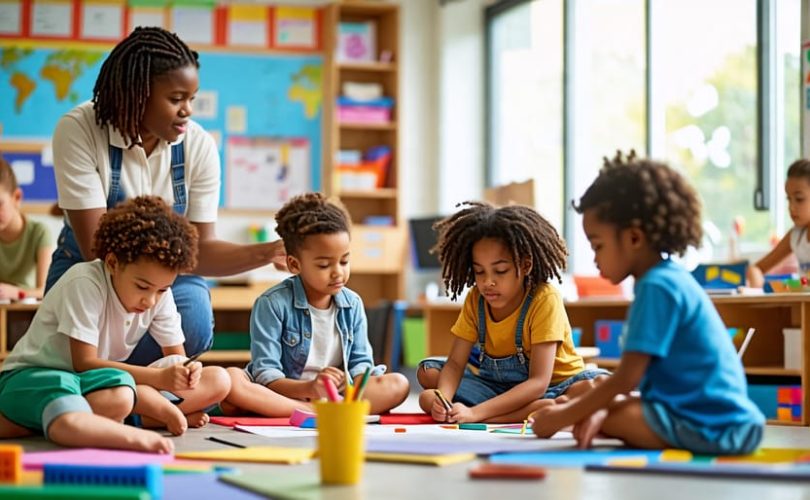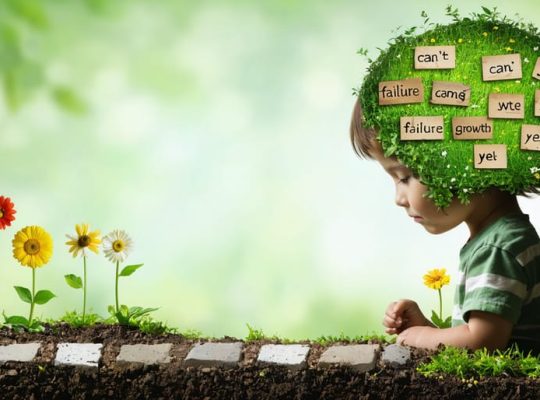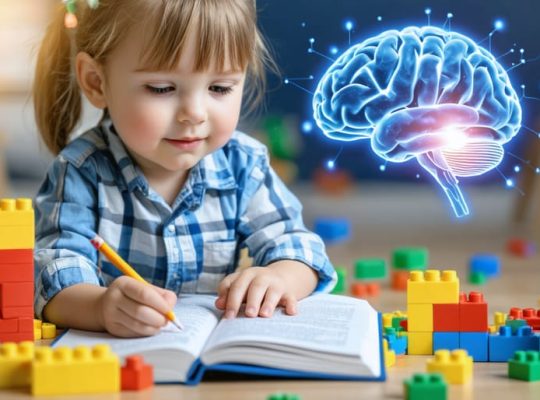Foster emotional resilience in students by teaching them effective coping strategies, self-regulation techniques, and healthy ways to express their feelings. Cultivate a growth mindset that embraces challenges, learns from setbacks, and celebrates effort over perfection. Build strong, supportive relationships with students, creating a safe space where they feel valued, heard, and understood. Equip them with problem-solving skills to navigate adversity, break down obstacles into manageable steps, and seek help when needed.
Teach Emotional Regulation Skills
Mindfulness Practices
Mindfulness practices can help children build resilience by promoting self-awareness and emotional regulation. Simple exercises like deep breathing, where children focus on taking slow, deep breaths, can calm the body and mind. Guided imagery involves picturing a peaceful scene, engaging the senses to create a soothing mental escape. Body scans teach children to notice physical sensations without judgment, fostering a connection between mind and body. Mindfulness Practices like gratitude journaling encourage children to appreciate the positive aspects of their lives, shifting focus away from stressors. Incorporating mindful moments into daily routines, such as pausing to observe the environment or savor a meal, helps children develop a habit of present-moment awareness. By practicing these age-appropriate exercises regularly, children can cultivate a sense of inner calm and resilience in the face of challenges.

Expressive Activities
Encouraging children to express themselves through creative outlets can be a powerful way to help them process and regulate their emotions. Art, journaling, and music provide safe spaces for students to explore their feelings without judgment. Creating art allows children to communicate complex emotions they may struggle to put into words. Journaling is a reflective practice that helps students gain self-awareness and work through challenges. Music, whether through listening, singing, or playing an instrument, can be a therapeutic and cathartic experience. By incorporating these expressive activities into their routines, students can develop healthy coping mechanisms and build emotional resilience. As caring adults, we can support children by providing them with the resources and opportunities to engage in these creative pursuits, while also respecting their unique preferences and modes of expression. Fostering a nurturing environment that values self-expression can help students navigate the ups and downs of life with greater ease and adaptability.

Encourage a Growth Mindset
Reframing Failure
Helping students reframe failure is crucial for building resilience. Encourage them to view setbacks as opportunities to learn and grow rather than personal shortcomings. For example, if a student struggles with a math concept, frame it as a chance to identify areas for improvement and develop better study strategies. Celebrate effort and progress, not just perfect outcomes. Share stories of famous figures who overcame failures, like Thomas Edison’s numerous attempts to invent the lightbulb. Model a growth mindset by discussing your own failures and what you learned from them. Teach students to replace negative self-talk like “I’m not good at this” with more constructive phrases like “I’m still learning.” Help them set realistic goals and break them down into manageable steps. Emphasize that failure is a normal part of the learning process and that perseverance is key to success. By reframing failure, we empower students to embrace challenges and build resilience.
Praising Effort and Progress
When building resilience in students, it’s crucial to praise their effort and progress rather than focusing solely on innate abilities. By acknowledging the hard work they put in and the improvements they make, we send the message that their growth and development are valued. This helps foster a growth mindset, where students believe their abilities can be enhanced through dedication and perseverance. Recognizing incremental progress, even in the face of setbacks, encourages students to keep pushing forward. Celebrating effort and progress helps students develop the confidence and determination they need to bounce back from challenges and continue striving for success.
Build Strong Relationships
Building strong, supportive relationships is crucial for fostering resilience in students. When children feel genuinely cared for and connected to their teachers, peers, and family members, they develop a sense of belonging and security that helps them navigate challenges more effectively. Teachers can cultivate these supportive relationships by showing genuine interest in their students’ lives, actively listening to their concerns, and offering encouragement and guidance. Peers also play a vital role in building resilience; positive friendships provide emotional support, opportunities for shared experiences, and a sense of camaraderie that can buffer against stress. Parents and caregivers can nurture resilience at home by creating a warm, supportive family environment where open communication, trust, and unconditional love are prioritized. When students feel valued and supported by the important people in their lives, they develop the confidence and emotional resources needed to bounce back from setbacks and persevere through difficulties. By intentionally fostering these supportive relationships, educators and parents can help students build a strong foundation of resilience that will serve them well throughout their lives.
Teach Problem-Solving Skills
Step-by-Step Approaches
Learning problem-solving frameworks can help students approach challenges methodically and build resilience. One effective strategy is breaking problems down into smaller, manageable steps. Students can identify the issue, brainstorm possible solutions, evaluate their options, and take action. Another approach is reframing problems as opportunities for growth and learning. Encourage students to view setbacks as temporary and focus on what they can control. Teach them to set realistic goals, monitor their progress, and celebrate small victories along the way. Engaging in regular exercise and mindfulness practices like deep breathing can also help students manage stress and maintain a positive outlook when faced with challenges. By equipping students with these problem-solving tools and strategies, we can help them develop the confidence and resilience to navigate life’s ups and downs.
Collaborative Problem-Solving
Collaborative problem-solving is a powerful tool for building resilience in students. When students work together to tackle challenges, they develop essential skills like communication, empathy, and creative thinking. Through shared experiences and mutual support, they learn that they are not alone in their struggles and that there is strength in numbers. Collaborating with peers helps students gain new perspectives, generate innovative solutions, and build a sense of belonging. By fostering a culture of teamwork and cooperation, educators can create a supportive environment where students feel safe to take risks, make mistakes, and grow from their experiences. Ultimately, collaborative problem-solving empowers students to face adversity with confidence, knowing they have the skills and support network to overcome any obstacle.

Promote Self-Care Habits
Healthy Coping Mechanisms
Healthy coping mechanisms are essential for students to manage stress and build resilience. Encourage regular exercise, which releases endorphins and improves mood. Help them find hobbies they enjoy, like art, music, or sports, to provide a positive outlet and sense of accomplishment. Teach deep breathing, mindfulness, and relaxation techniques they can use when feeling overwhelmed. Emphasize the importance of talking to trusted friends, family, or mentors about their feelings and challenges. Journaling can also be a helpful tool for processing emotions. Ensure they get enough sleep, eat well, and take breaks to recharge. Model these strategies yourself and create a supportive environment where seeking help is encouraged. With these tools, students can develop lifelong skills for successfully navigating life’s ups and downs.
Modeling Self-Care
Educators can model resilience by demonstrating self-care and sharing their own strategies with students. This may involve discussing how they manage stress, prioritize well-being, and cope with challenges. By being open about their own experiences and techniques, teachers can normalize self-care and encourage students to develop their own practices. Sharing personal stories of overcoming obstacles, maintaining work-life balance, and engaging in hobbies or relaxation methods can inspire students to prioritize their mental health and build resilience.
Provide Opportunities for Autonomy
Giving students age-appropriate autonomy is crucial for building their resilience and self-efficacy. When children have opportunities to make choices and exert control over their lives, they develop confidence in their abilities and learn to trust their own judgment. For younger students, this might mean letting them choose between two appropriate outfits or decide the order in which they complete their homework assignments. As students get older, they can be given more significant choices, such as selecting elective classes or extracurricular activities.
It’s important to provide a safe and supportive environment where students feel comfortable taking risks and making decisions. This means offering guidance and feedback while also allowing them to learn from their mistakes. Encouraging students to set their own goals and work towards them independently can also foster a sense of autonomy and accomplishment.
Additionally, giving students a voice in classroom decisions, such as establishing rules or planning activities, can help them feel more invested and empowered. By providing opportunities for autonomy, we send the message that we believe in our students’ abilities and trust them to make responsible choices. This, in turn, helps them develop the self-assurance and resilience they need to navigate life’s challenges with confidence.
Building resilience in students is a crucial task for educators and parents alike. By focusing on strategies that foster emotional regulation, growth mindset, strong relationships, problem-solving skills, self-care, and autonomy, we can equip our children with the tools they need to navigate life’s challenges. Incorporating these approaches into daily interactions and curriculum not only supports students’ immediate well-being but also lays the foundation for long-term mental health and success.
Nurturing resilience has far-reaching benefits that extend well beyond the classroom. Students who develop resilience are better equipped to cope with stress, adapt to change, and persevere in the face of adversity. These skills translate into improved academic performance, healthier relationships, and enhanced overall well-being. By prioritizing resilience-building strategies, we invest in our students’ future, empowering them to become confident, adaptable, and thriving individuals ready to tackle whatever life brings their way.







